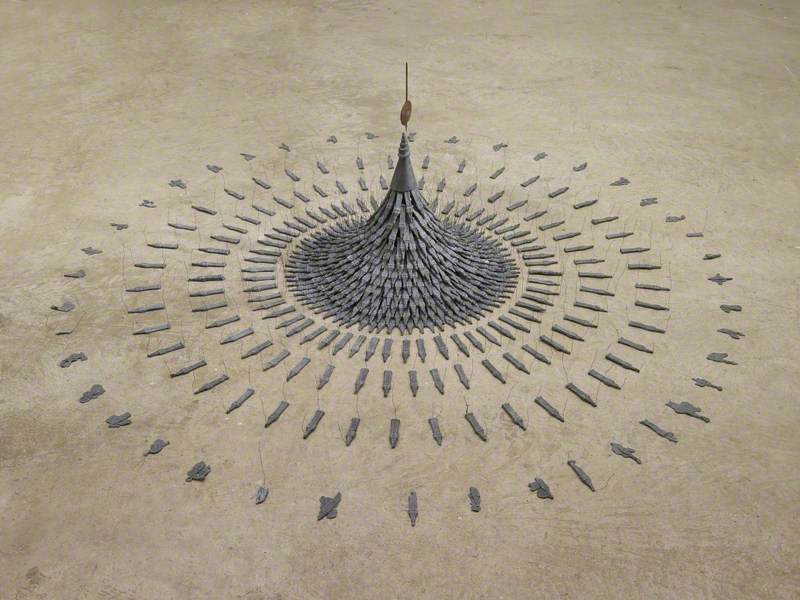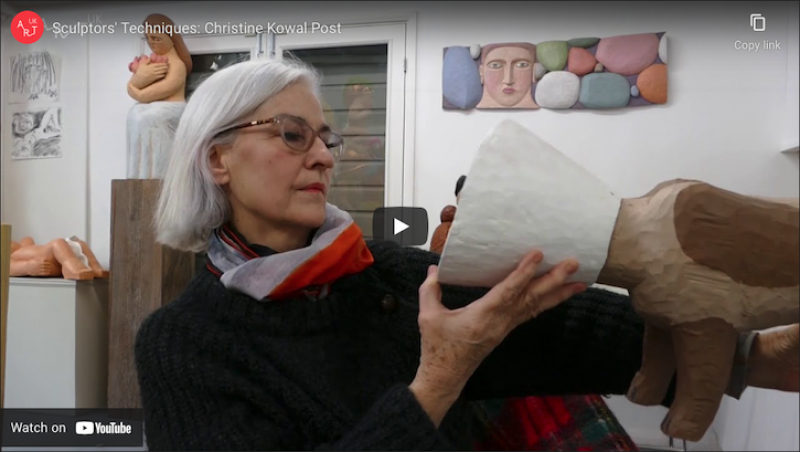'Crouching Venus'
This three-minute audio clip describes the sculpture Crouching Venus by Antonio Susini (1558–1624).
Full audio description text
This small bronze sculpture of a woman bathing is known as Crouching Venus. It is around 25 cm tall and stands on its own on a metre high plinth in the ballroom of the Holburne Museum. You can access the work in the round, and the smooth, shiny texture of the bronze surface catches the light as you move around the figure. The patinated surface reveals shades of green and brown, textured by age.
The sculpture is of a nude woman kneeling on her right knee, upon drapery folded on an oval base. Her left knee is raised, making her thigh parallel with the base. Her torso is twisted elegantly so that she looks down to her left. Her left arm is raised and bent behind her neck as she unravels a piece of cloth that was wrapped around her head. The loosened fabric drapes across her back to her left underarm, which she softly dries with her right hand – the arm reaching across her body, the elbow gently resting on her left thigh. The twisting figure creates a wonderful sense of rhythm, flowing from top to bottom: her raised left elbow, dropped right elbow, raised left knee and dropped right knee, all physically linked.
Crouching Venus was made in around 1600 by bronze-caster and sculptor Antonio Susini, after a model by the Florentine sculptor Giovanni Giambologna that was itself based on ancient Greek and Roman sculptures. Susini worked in Giambologna's studio from the mid-1570s and his precise bronze castings are often judged finer than his master's.
Inscribed on Venus' back, on her left shoulder blade just beneath the draped cloth, is 'No. 35'. This is an inventory mark of the French Royal Collection. The sculpture was acquired by Louis XIV of France in 1663 and remained in royal possession until the Revolution in 1789. It is one of the most important works that Sir William Holburne acquired, however we do not know precisely when he bought it: possibly when he travelled to France in 1855. In the catalogue of his collection from 1887 it is simply described as 'a fine Florentine bronze statuette of Venus Calipyges (which is a reference to the original classical name for the figure), rising from the bath.'
Intriguingly, two small details are missing from this figure. Both the little finger of her left hand which holds the drapery and the big toe on her right foot have broken off, showing that though a highly prized object, it has sustained some damage over the years.
Art UK and VocalEyes
This audio description was created by VocalEyes for Art UK Sculpture, a national project to document and increase access to the UK's publicly owned sculpture. This description is one of 25 representing sculpture collections across the UK.



.jpg)





















